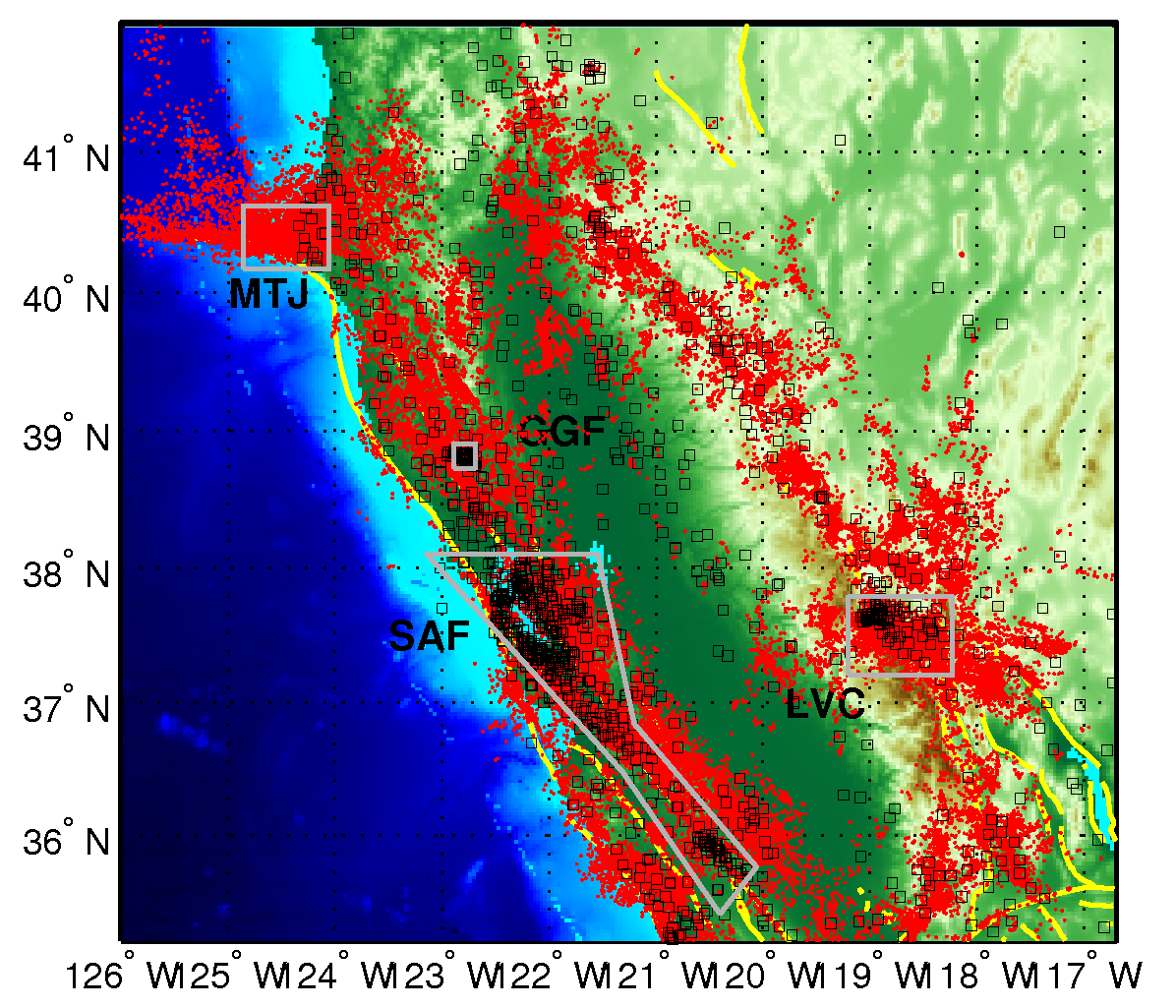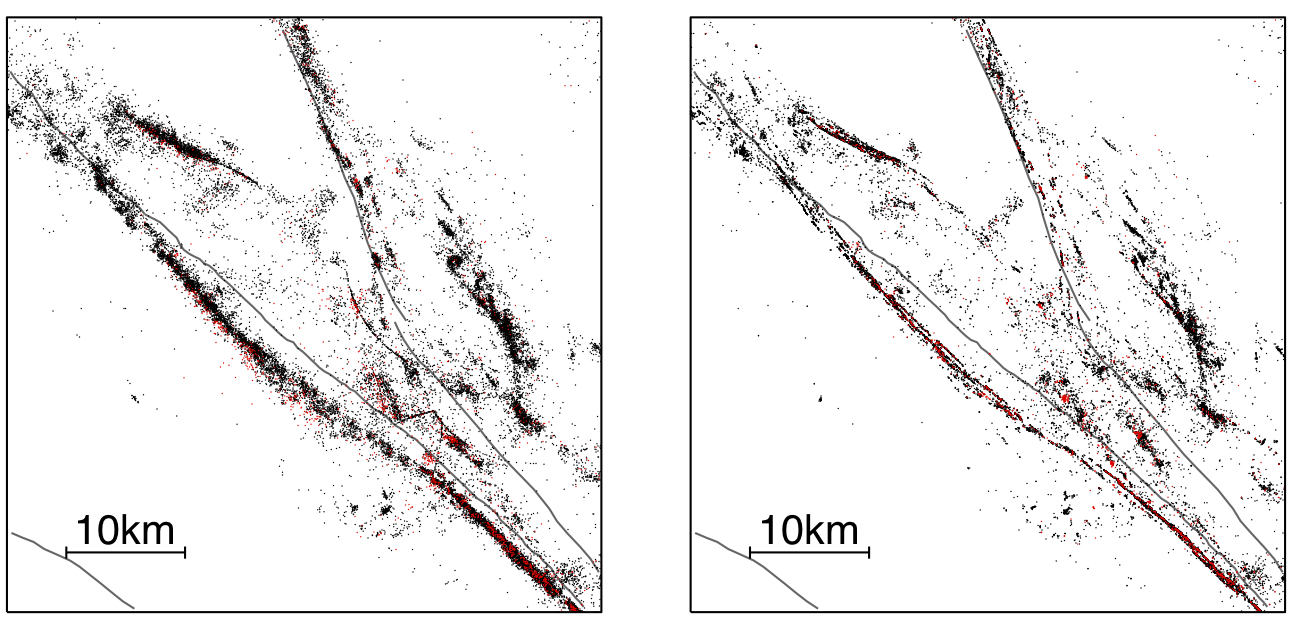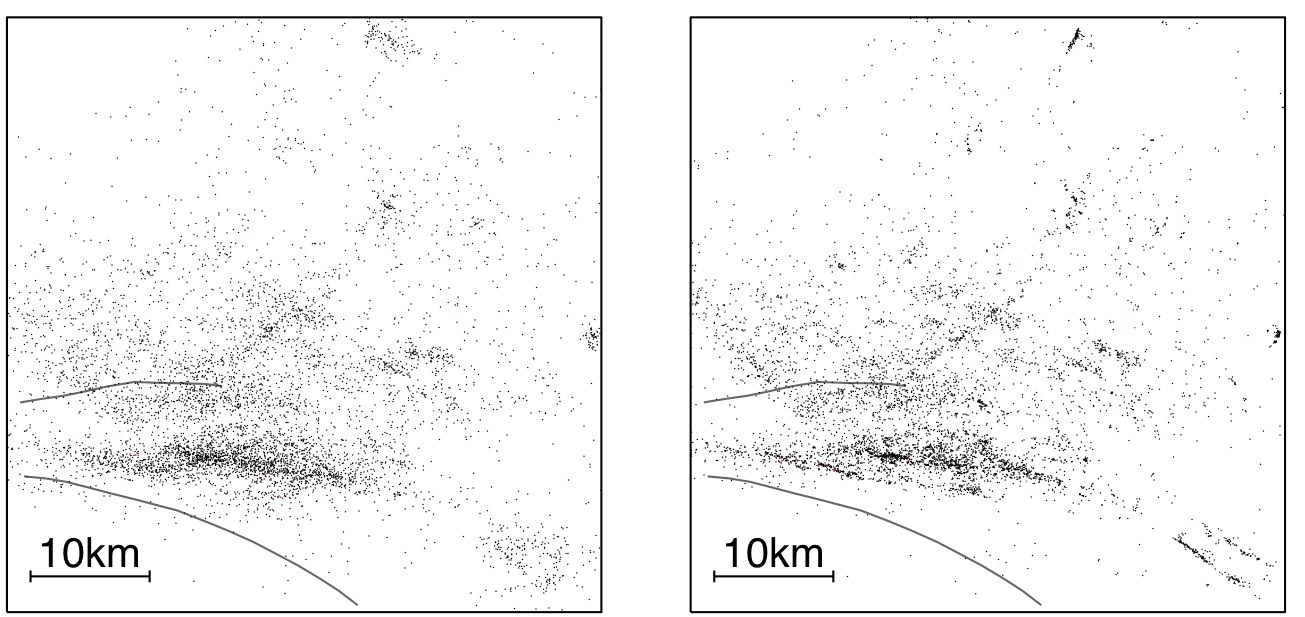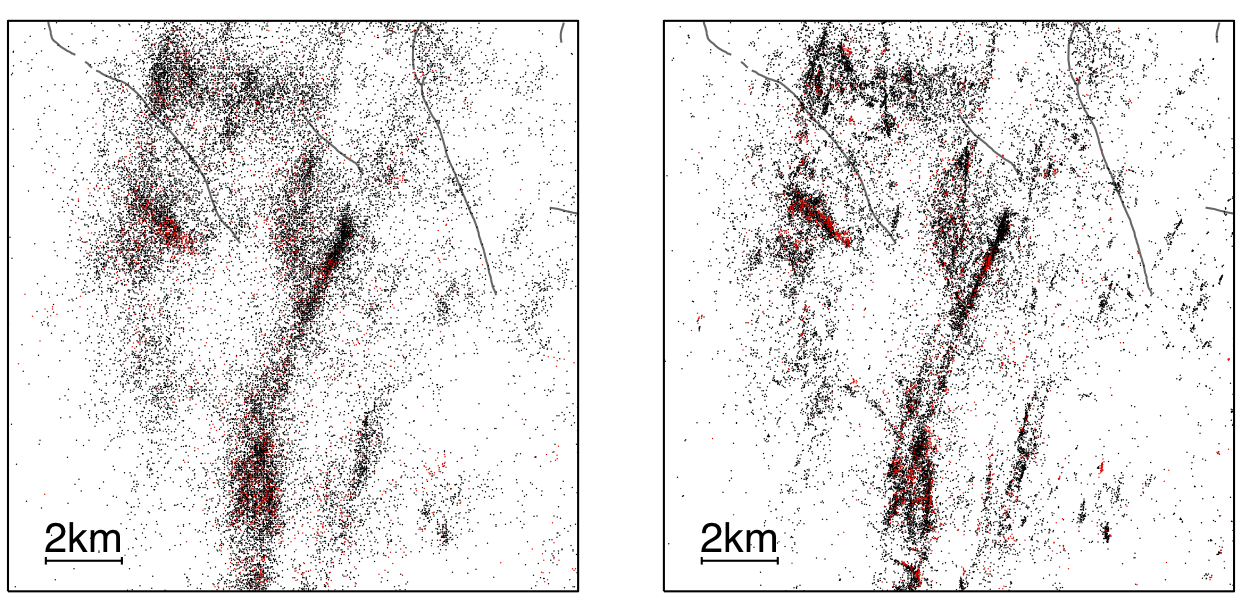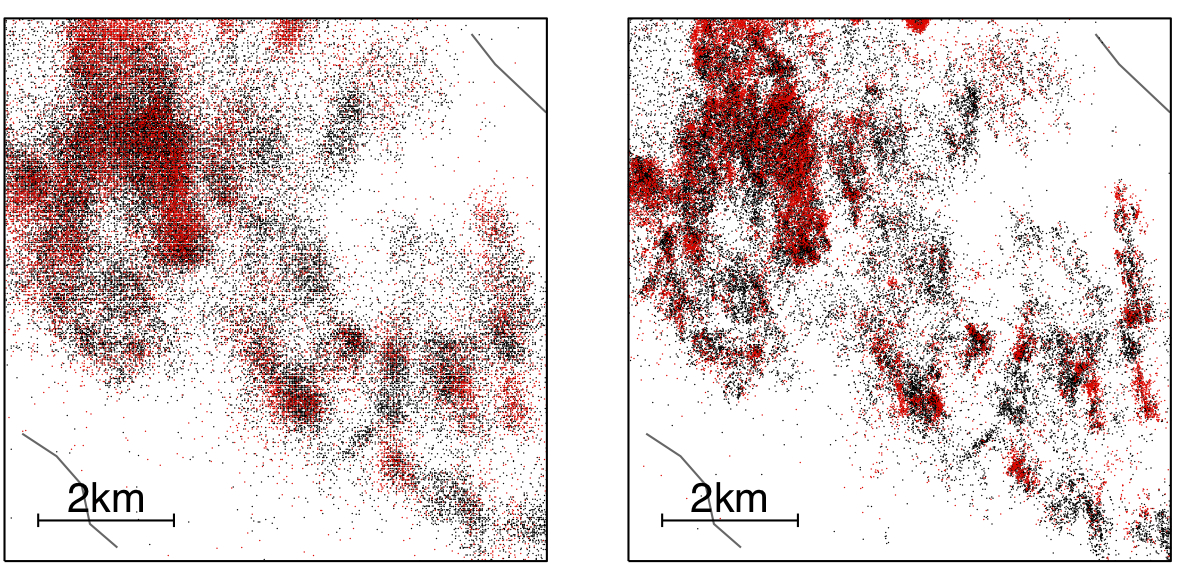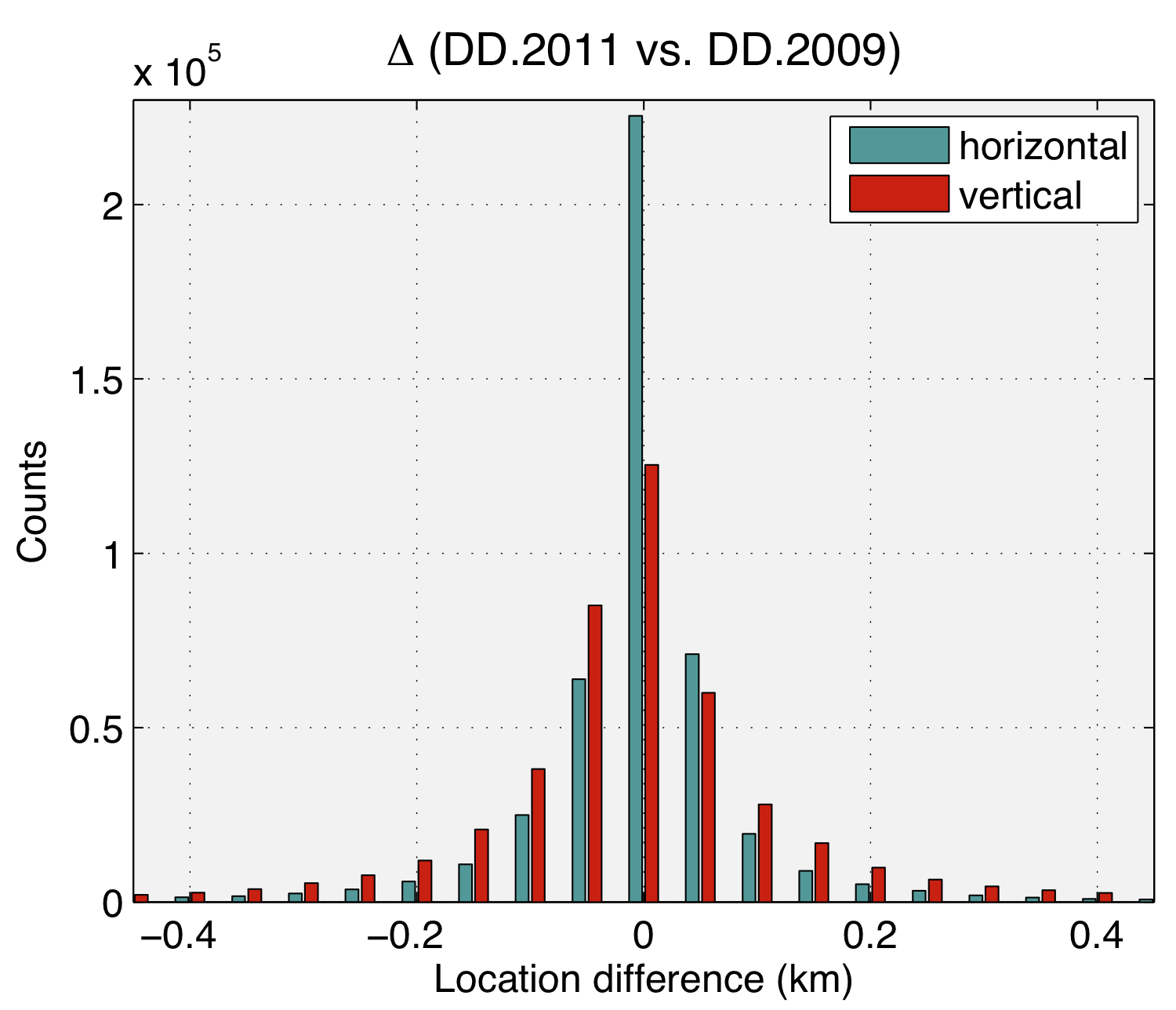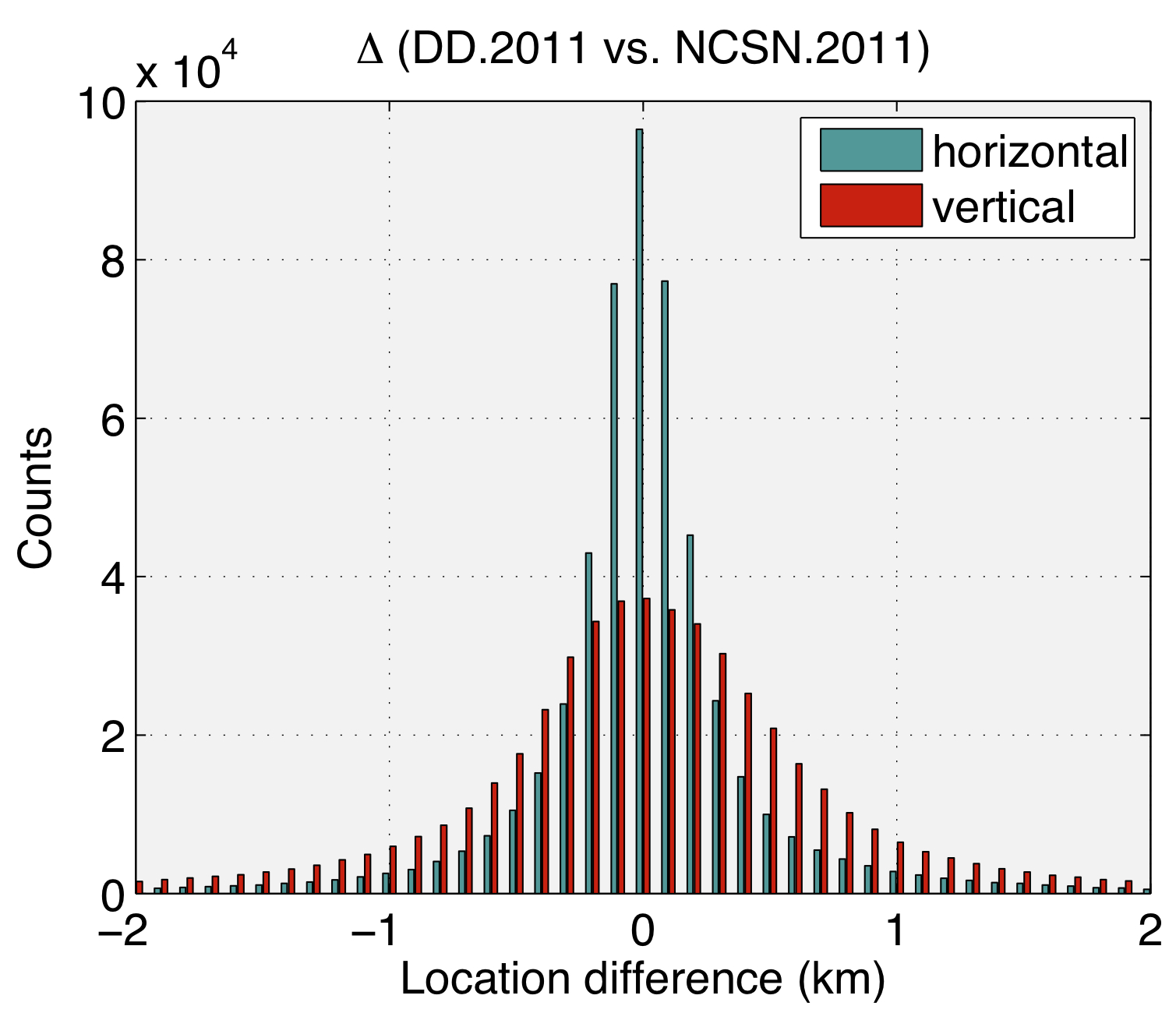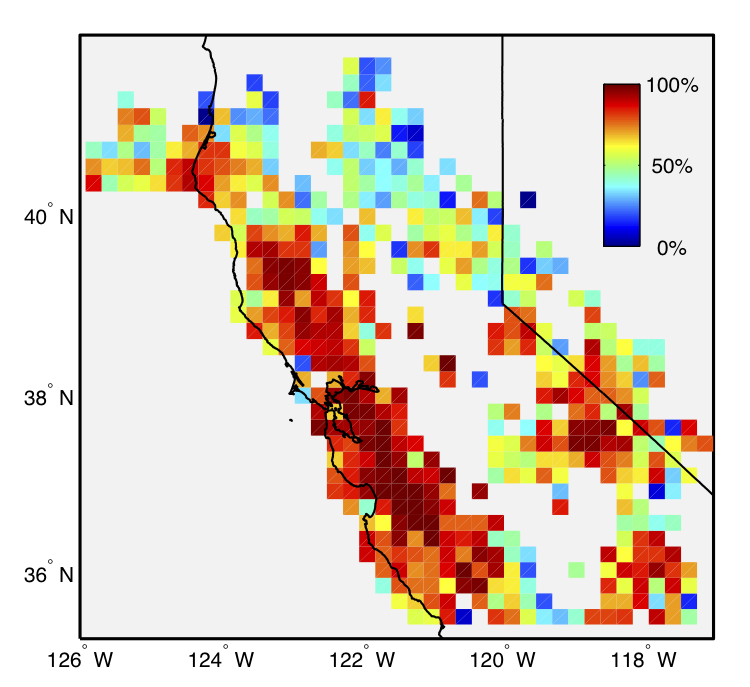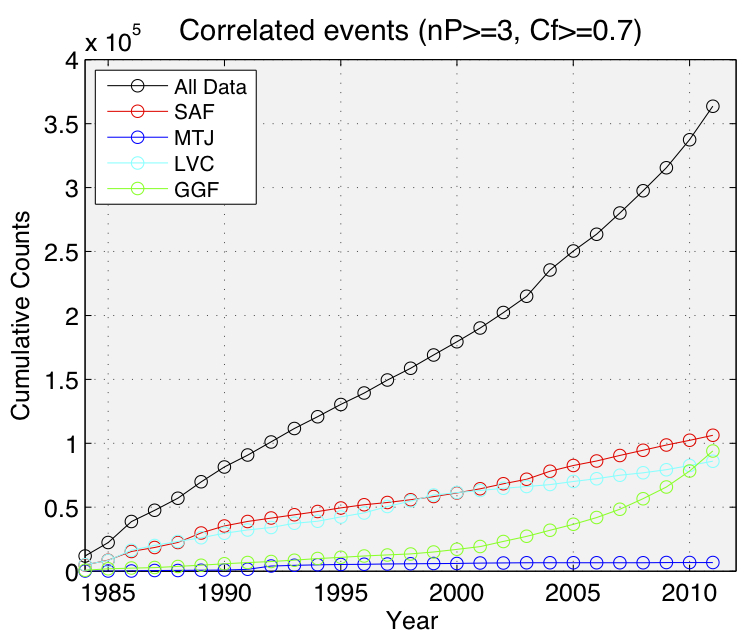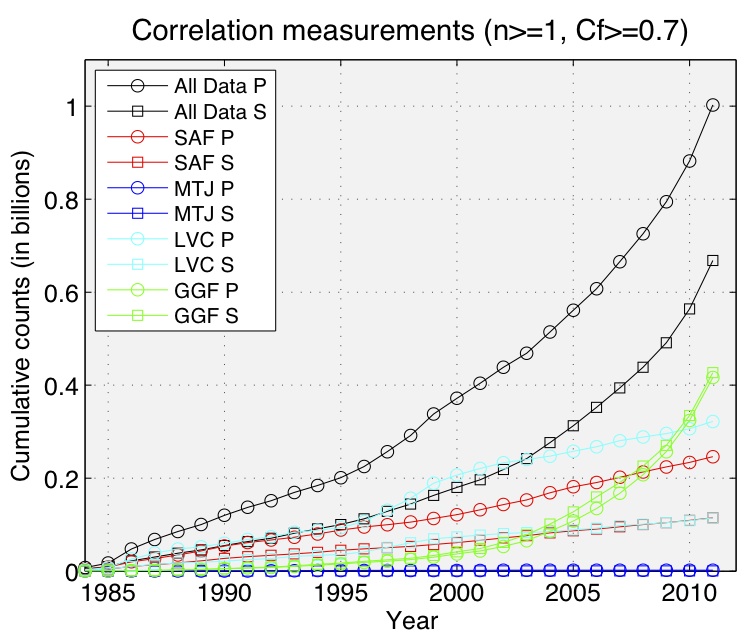Overview
This periodically updated catalog of earthquake locations is computed from a simultaneous re-analysis of 27 years (1984-2011) of the digital seismic archive of Northern California. Waveform cross correlation (CC) and double-difference (DD) methods are used to improve the resolution in the existing earthquake catalog generated at the Northern California Seismic Network (NCSN) by up to three orders of magnitude. The catalog is based on 1.7 billion CC differential time measurements with correlation coefficients, Cf>=0.7 from all correlated pairs of events that are separated by less than 5 km (see Schaff and Waldhauser, 2005 for details). These data, combined with 11.4 million arrival time picks from the NCSN bulletin, were inverted for the precise relative locations of 512,059 events using the hypoDD algorithm (see Waldhauser and Schaff, 2008). Click here for a summary of the results.
Correlation characteristics and location improvements are remarkably similar across most of Northern California, implying the general applicability of these techniques to image high-resolution seismicity caused by a variety of plate-tectonic and anthropogenic processes. These results indicate that consistent long-term seismic monitoring and data archiving practices are key to increase the resolution in existing hypocenter catalogs, and to estimate the precise location of future events on a routine basis.
